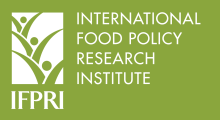Can Tanzania feed itself by 2050?: Estimating cereal self-sufficiency to 2050
Resource information
Date of publication
April 2017
Resource Language
ISBN / Resource ID
131183
Pages
4
License of the resource
Copyright details
Copyright © 2017 International Food Policy Research Institute. Licensed for use under a Creative Commons Attribution 4.0 International License (CC BY 4.0).
Producing adequate food to meet global demand by 2050 is widely recognized as a major challenge, particularly for Africa south of the Sahara, including Tanzania (Godfray et al. 2010; Alexandratos and Bruinsma 2012; van Ittersum et al. 2016). Increased price volatility of major food crops (Koning et al. 2008; Lagi et al. 2011) and an abrupt surge in land area devoted to crop production in recent years (Grassini et al. 2013) reflect the powerful forces underpinning this challenge. The 2008 price spikes triggered the Food and Agriculture Organization and the World Food Programme to issue warnings and call for a 60–70 percent increase in food production by 2050 to meet the escalating food demand for the expected 9.7 billion global population.
Publisher(s)
Data Provider
Geographical focus


